What Live Food Can Bearded Dragons Eat?
Learn which live foods for bearded dragons are safe, which are not, and which are in fact poisonous and should be avoided
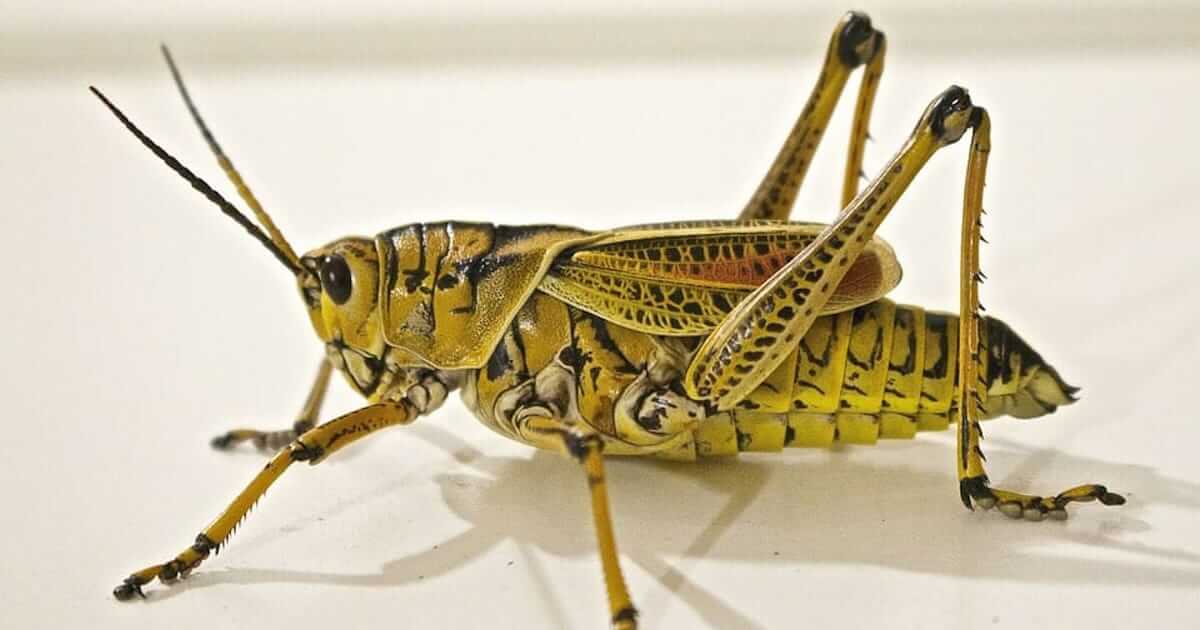
Last Updated: November 22nd, 2021
By: Steve
Table of Contents
What Live Food Can Bearded Dragons Eat?
Bearded dragons can eat a variety of live foods – mostly insects or grubs. Live insects for bearded dragons include;
- Dubia Roaches
- Crickets
- Locusts
- Silkworms
- Waxworms
- Hornworms
- Morio-Worms (Superworms)
- Mealworms
- Calciworms (Black Soldier Fly Larvae)
- Butterworms
- Earthworms (yes, they can)
Other live foods for bearded dragons include;
- Pinky Mice (rarely)
- Fuzzy Mice (even more rarely)
How Much Live Food Should I Feed My Bearded Dragon?
Bearded dragons are omnivores, which means they should eat a diet of vegetables and live food. With this mind we often get asked how much live food should people feed their bearded dragons. We usually go by a ratio.
The ratio of vegetables to meat/live food varies depending on the bearded dragon’s age. This is because young bearded dragons require more protein to help them grow faster. Too much protein for adults though can lead to gout and obesity. A rough guide is as follows;
| Bearded Dragon Age | Live Food : Vegetable Ratio |
|---|---|
| Baby Bearded Dragons | 80 : 20 |
| Juvenile ( 9 months + ) | 50 : 50 |
| Adult Bearded Dragons | 10-20 : 80-90 |
You’ll notice that we’ve specified a 50:50 mix for Juveniles. This is a bit arbitrary and of course can be difficult to calculate. The basic rule of thumb is that baby bearded dragons should be fed mostly insects. Adult bearded dragons should be fed mostly vegetables. And juveniles are somewhere in between, with a gradual switch from baby diet to adult diet from about 6-9 months old.
Bearded dragons should only eat fruits and treats occasionally so we’ve not included them in the percentages. These percentages and their relevance are explained in more details in the article How Much Should I Feed My Bearded Dragon and When?
So, having decided that bearded dragons do eat live food, which live foods should I feed my bearded dragon?
What Size Live Food Can I Feed My Bearded Dragon?
Generally any bug that is narrower than the width between your bearded dragons eyes is fine. So, this means that insects are definitely going to need to be smaller for baby bearded dragons.
Many online sources state that insects should be no longer than the width between your bearded dragon’s eyes. This is not true. Insects should be no wider than the space between your bearded dragon’s eyes. For baby bearded dragons we’d err further on the side of caution and feed smaller insects – but some of that depends on the insect make-up. Larger calciworms are far safer than even smaller mealworms for example.
Live Foods For Bearded Dragons
We Used To Say To Avoid Wild Insects
Firstly, we think it’s generally a good idea to avoid feeding your bearded dragon any insects that have been caught from the wild. You don’t know what these insects have been subjected to during their lifespan. They may have been sprayed with pesticides or herbicides. There’s not much science around what these pesticides and herbicides can do to Bearded Dragons. It’s just best not to make yours the guinea pig. Wild insects may have picked up all manner of toxins from the soil in which they grew up as larvae, and the side of the road where they might have been half an hour prior to being in your Bearded Dragon’s belly. It’s much safer to buy food bred (and tested for parasites) from a reputable source.
However, if you know you live in an area where there’s very limited pesticide sprayed around – and if you can keep the insects for a few days and gutload them nicely for that few days before feeding them to your bearded dragon then wild insects are actually very likely to be just as safe as store bought. Be certain that the insect you’re feeding is safe of course, some insects are toxic to bearded dragons – see the list further down this post for those that definitely are. We’d recommend treating all insects as toxic unless you know from a reputable source that they’re not.
We detail below the staples, occasional live foods and live foods to avoid;
Staple (Regularly Fed) Live Foods For Bearded Dragons
These live insects are good to feed a bearded dragon regularly. We generally live feed an adult bearded dragon once or twice a week. Every other day is veggie day. Baby bearded dragons should be fed live food every day. A good rule of thumb is to provide as many insects as the bearded dragon wants in about a 15 to 20 minute sitting.
Dubia Roaches
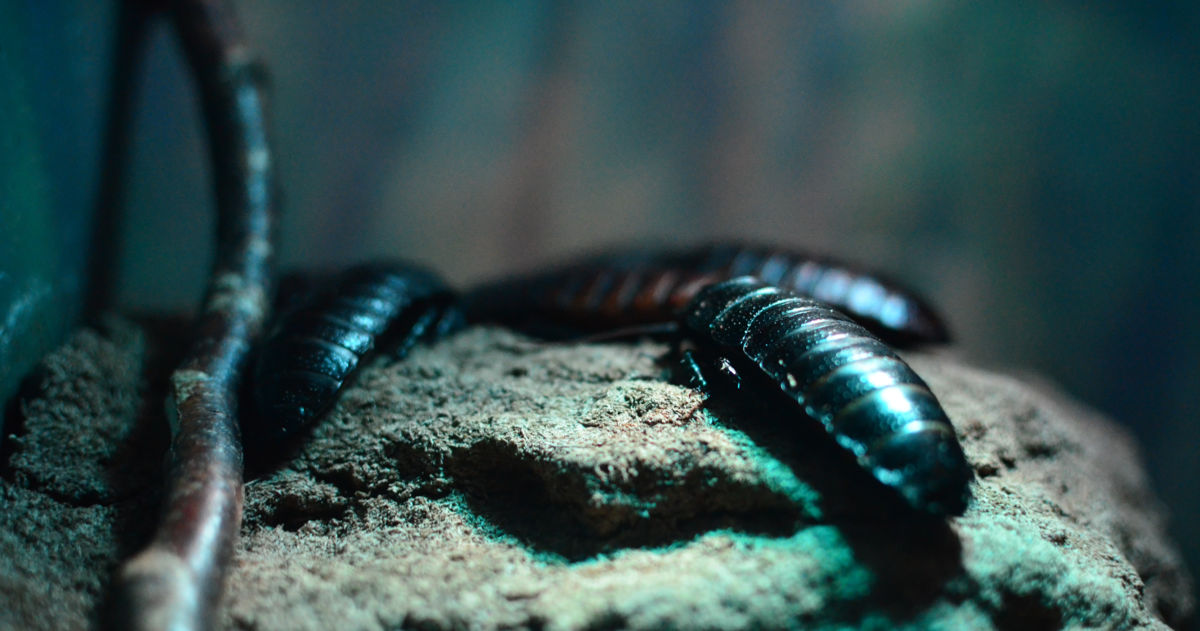
Positives: Dubia Roaches are probably the best insect to feed a bearded dragon. They’re loaded with protein and have a great moisture content. They do contain some fat but not too much. Their exoskeleton isn’t too tough so shouldn’t lead to impaction problems. They’re quieter than crickets and don’t generally smell as bad either. Dubia roaches can be bred fairly easily. So, if you want to breed your own food these are a good insect to consider for that purpose. These roaches can’t climb, meaning they don’t easily escape from either the vivarium or the pot you put in the tank. If they can’t escape they’re not as likely to end up wandering the house.
Negatives: Some American states (Florida for example) do not allow the keeping or breeding of Dubia roaches, not even for feeding to Bearded Dragons. You’ll need to check your local state laws if you’re a US bearded dragon keeper.
For more information about Dubia Roaches see Can Bearded Dragons Eat Dubia Roaches?
Silkworms
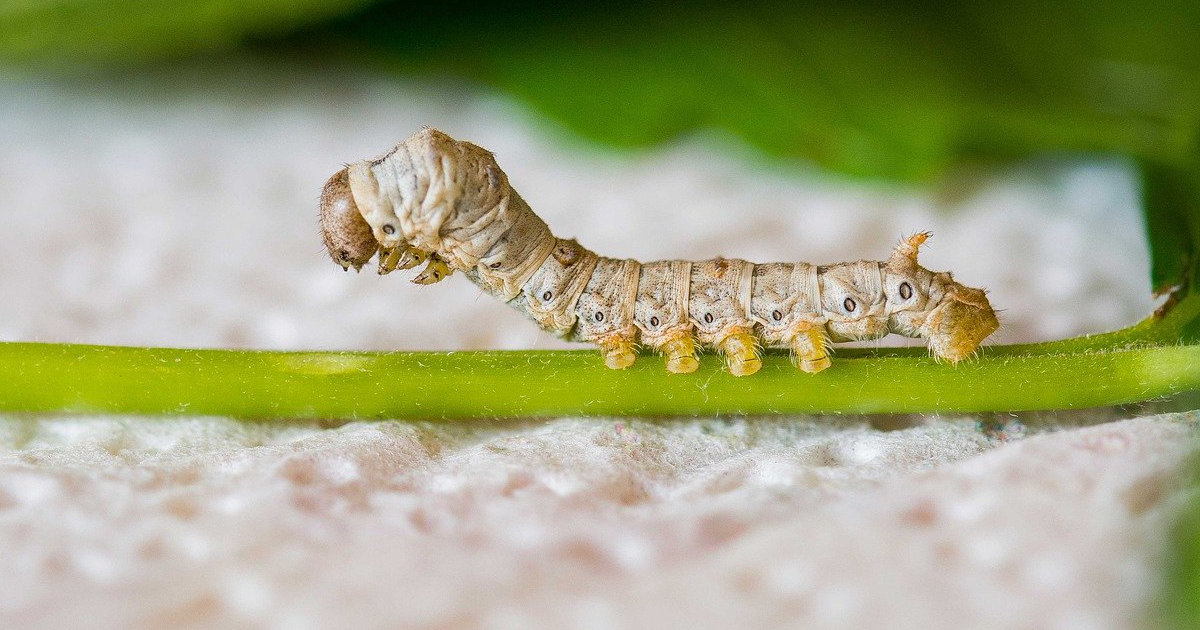
Silkworms provide a good amount of protein and calcium as well as good moisture content. They are quite small though so a bearded dragon might need a few of these at a time to satisfy them. The bodies of silkworms are soft and especially suitable for young dragons as well as adults.
Silkworms can grow from approximately three quarters of an inch to an inch and a half. They have a fantastic moisture content. Many places will also gutload them for you before you purchase.
For more information about Silkworms, see Can Bearded Dragons Eat Silkworms?
Crickets
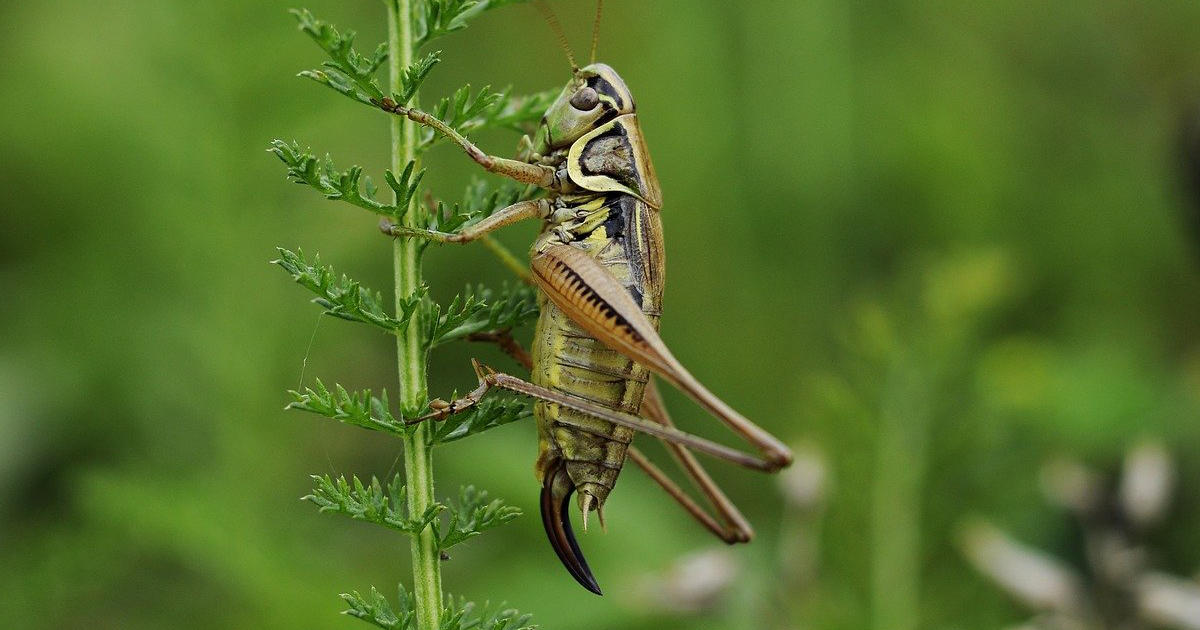
Crickets are an excellent staple live food for a bearded dragon, at least nutritionally. Keeping them can be a nightmare though. They’re noisy and a little bit smelly – and they escape easily. If they escape you may be haunted with chirping noises from under the furniture for weeks. Indeed, even when housed in their feeder container they can be noisy. There are silent crickets available but they don’t always turn out to be as silent as advertised.
They are a great source of protein and calcium with a good moisture content too. Crickets can also be gut-loaded easily to provide some of the leafy greens and calcium supplements that a bearded dragon needs. They’re readily available from almost any pet store that has a reptile section.
Crickets are an excellent staple food for a bearded dragon. They’re especially good in locations where Dubia Roaches and/or Locusts are forbidden.
But beware they can jump well, so prepare for those escape acts.
For more information about Crickets, see Can Bearded Dragons Eat Crickets?
Locusts
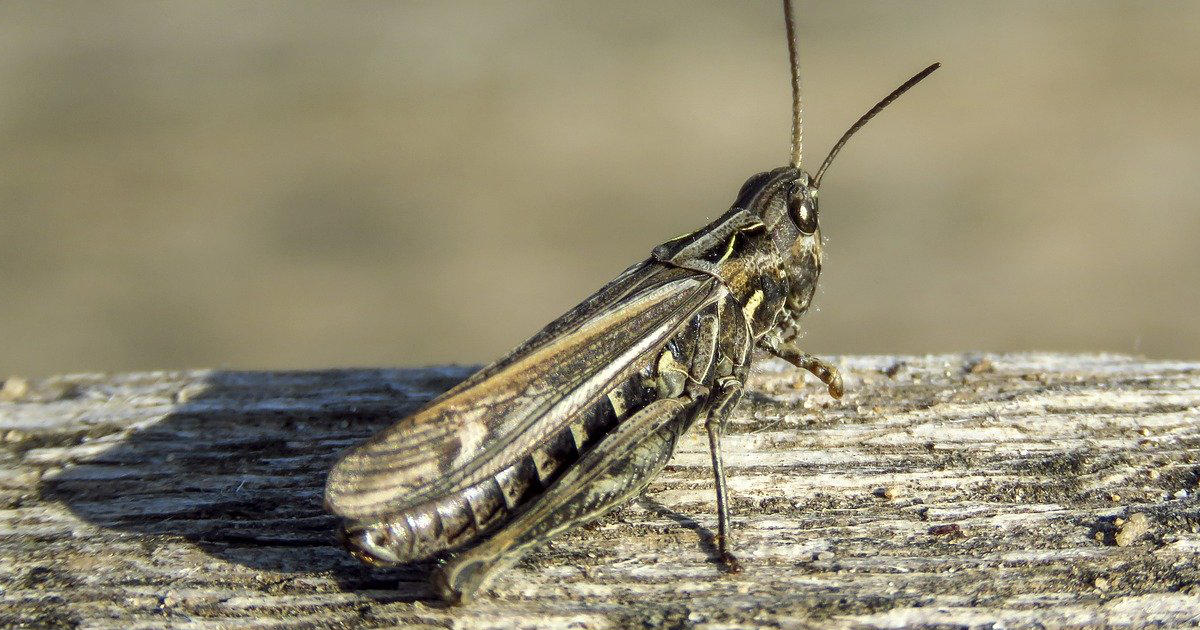
Locusts can grow quite large, but do tend to be a lot quieter than crickets. Bearded dragons love them and we’ve fed ours on locusts quite a lot. They’re a good source of moisture and protein. They can get too big for babies and juveniles. They also have some hard aspects to their exoskeleton so there’s a risk of impaction for the smaller bearded dragon. A good rule of thumb is to never feed a baby dragon something that wouldn’t fit between their eyes. The body of the locust should fit lengthways between your bearded dragon’s eyes.
If you’re feeding locusts to your bearded dragon it’s super important to make sure the temperatures are correct. Proper temperatures help your dragon to digest their food and reduce impaction risk from the exoskeleton.
Some countries do not allow the import or keeping of locusts (the USA for example) but the UK does allow them and they’re a good staple live food.
For more information on Locusts, including how to keep them, see Can Bearded Dragons Eat Locusts?
Phoenix Worms / Calci Worms / Black Soldier Fly Larvae
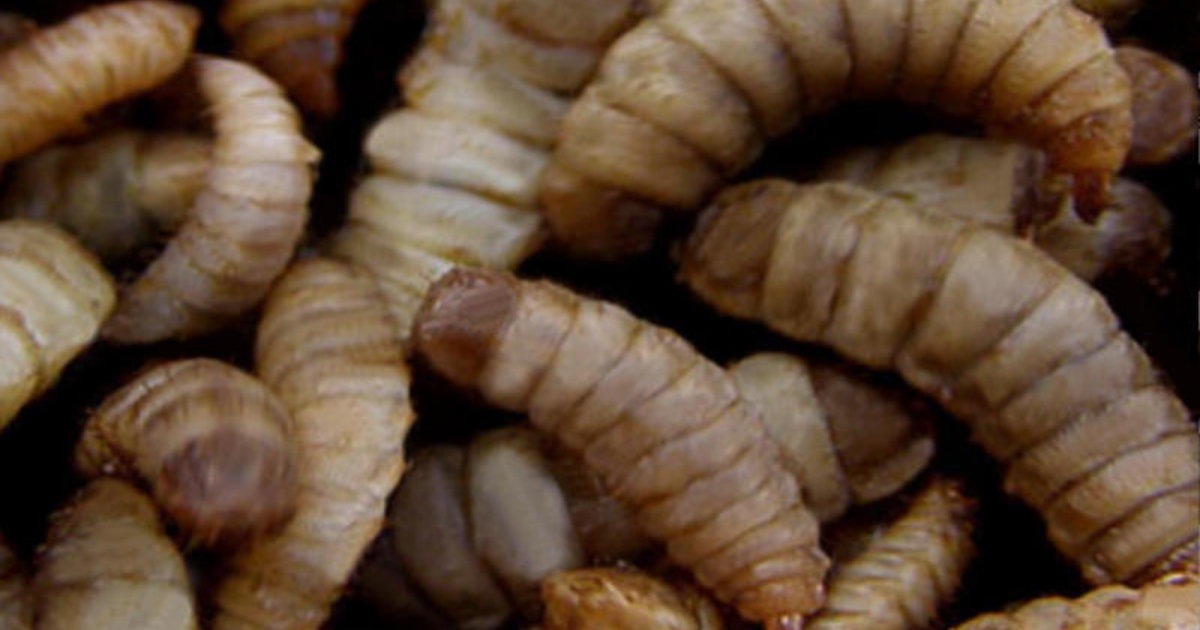
Phoenix Worms are also referred to as Calci Worms and Black Soldier Fly Larvae. These are also a favourable alternative for our bearded dragons. They make a great staple option because they are an excellent source of protein and calcium. They’re also quite easy to keep. Unfortunately, BSFL are quite small. You’ll need to feed a lot of them to an adult bearded dragon which makes them a more expensive option. BSFL are fabulous for younger bearded dragons though.
Of course, these will develop into Black Soldier Flies if your dragon doesn’t eat them. This isn’t a big problem generally, since they’ll probably get eaten as flies when they mature. Make sure there’s not too many of them that escape though.
For more information about BSFL see Can Bearded Dragons Eat Black Soldier Fly Larvae / Calciworms?
Occasional Live Foods For Bearded Dragons
These insects are good to feed occasionally, either as supplements or to mix up the diet a little bit. Some of them should really only be considered a treat.
Hornworms
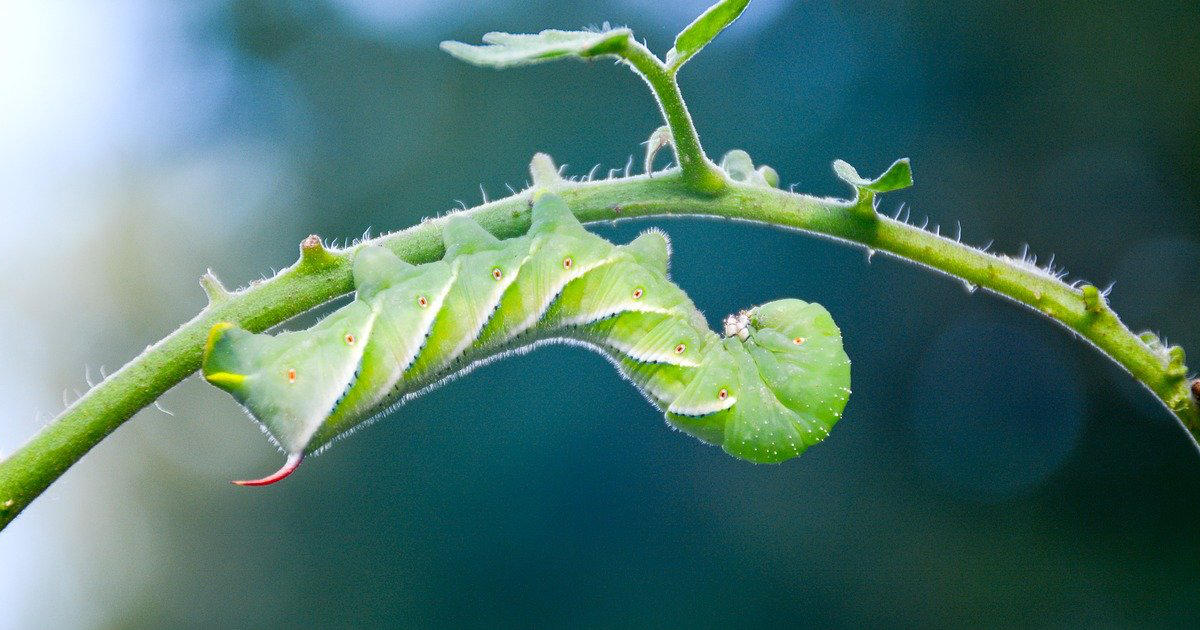
Hornworms or Goliath worms are a great insect for bearded dragons. They have a much higher water content than Dubia Roaches, but less protein. Goliath worms also provide a fantastic amount of calcium which is necessary for bearded dragons to avoid Metabolic Bone Disease. They can grow quite large though. This isn’t a problem for adult dragons but is something to bear in mind with juveniles and baby dragons.
Also, bear in mind that although the horned worms are great for hydration, if you overfeed too many there is a risk of loose stools or diarrhoea – which can be messy and isn’t ideal. For this reason we consider horned worms an occasional live food.
For more information about Hornworms see Can Bearded Dragons Eat Hornworms?
Mealworms
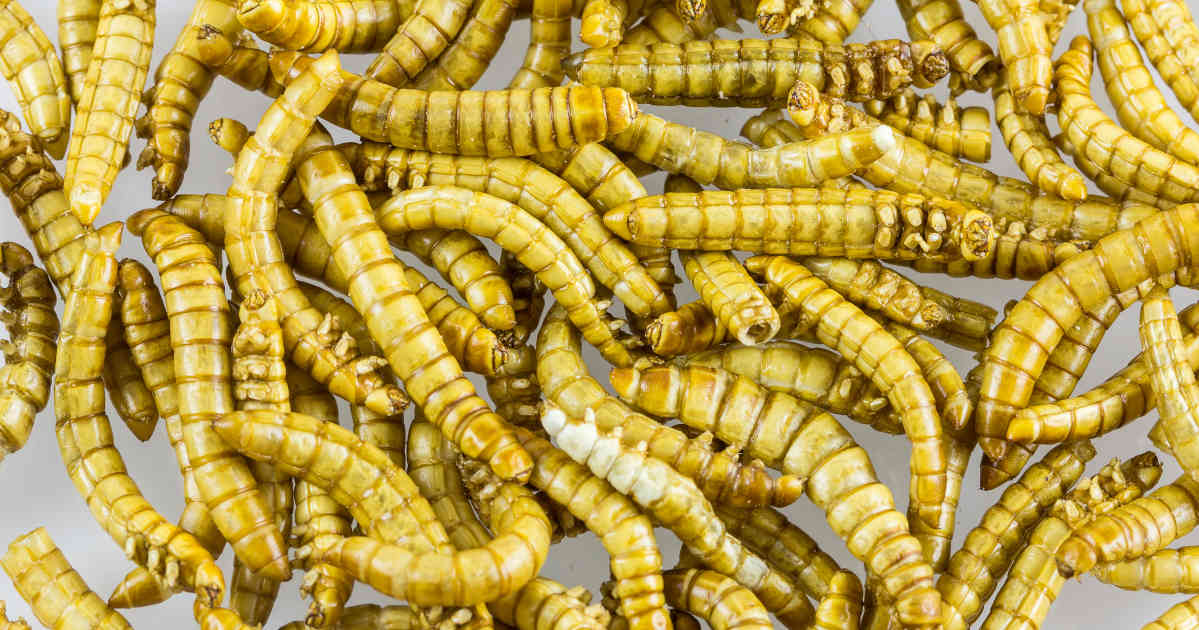
Mealworms do have a good moisture content for keeping bearded dragons hydrated. They also have a fairly high protein content too. They’re good for an occasional meal to mix the diet up. We don’t believe they should be used as a staple. This is because they don’t contain a great calcium amount and more importantly they have a very hard outer shell. The shell is made of a substance called chitin.
Chitin poses a high risk of impaction for baby and younger bearded dragons. It’s best to avoid them for babies.
Even for adult bearded dragons, this chitin shell poses a risk of impaction if too many are fed at once. Keeping correct temperatures in the vivarium can help reduce this risk for adults.
Many people suggest mealworms as a staple insect for bearded dragons. For the reasons above we prefer them as an occasional, but your mileage may vary on this one. If you’re going to use them as a staple for an adult bearded dragon, we’d definitely recommend dusting them with a suitable calcium supplement occasionally.
For more information about Mealworms please see Can Bearded Dragons Eat Mealworms?
Butterworms
Butterworms are a small worm that contain good levels of protein and calcium. They do tend to have a lower moisture content than many of the other insects listed here though. Butterworms have a good level of calcium so they are a great supplement to the bearded dragon diet. They’re also good to add some variety to the diet.
Since they’re quite small you’d need to feed a lot of them to an adult bearded dragon as a staple. The other insects mentioned above make a better staple.
Waxworms
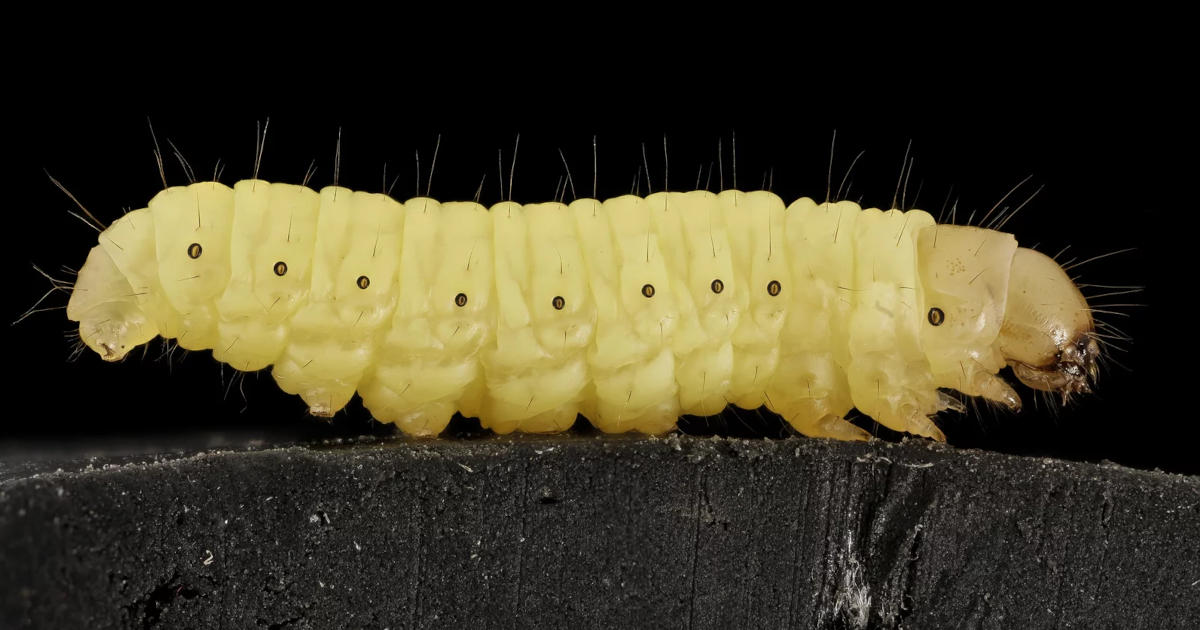
Waxworms are a small white worm that bearded dragons generally absolutely love. Unfortunately they’re high in fat content and they can lead to obesity. They can be useful for hydrating your dragon though because they have a good moisture content. They also have a reasonable calcium concentration. The amount of fat is the biggest reason they should only be given as a treat. Obesity is a huge (pun intended) problem in captive bearded dragons. We go into more detail about the perils of bearded dragon obesity in our article How Much Should I Feed My Bearded Dragon And When?
I’ve heard stories of people who feed waxworms and once your pet has the taste for them they won’t eat anything else. Be cautious of this when introducing waxworms and perhaps don’t offer too many too often.
For more information about Waxworms see Can Bearded Dragons Eat Waxworms?
Earthworms
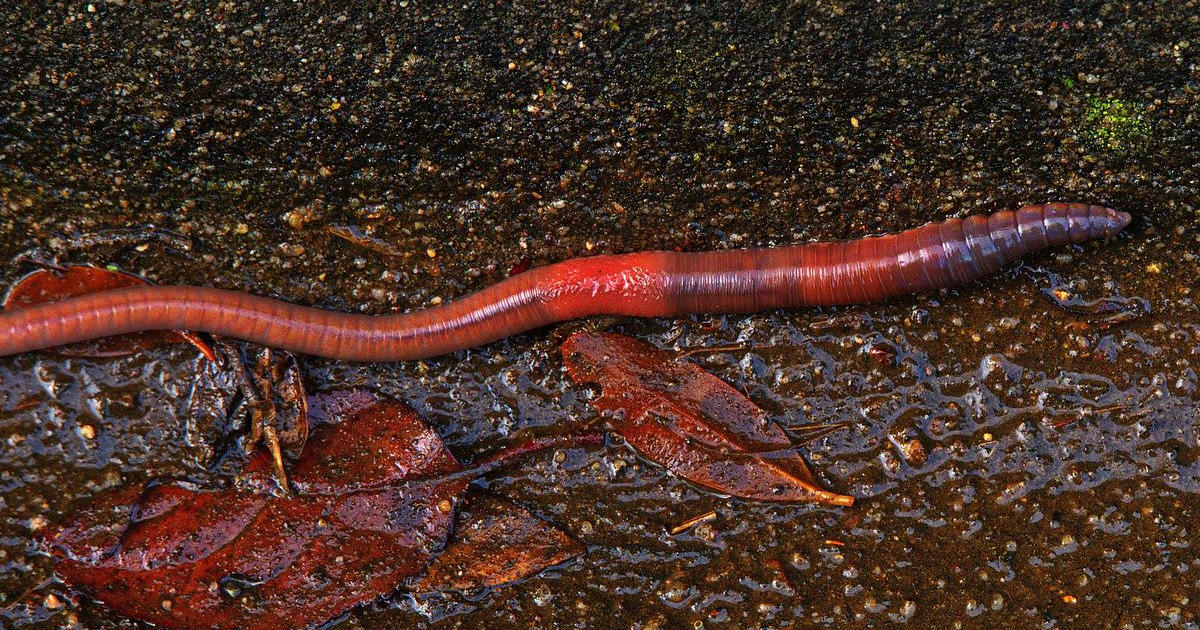
You may be quite tempted to nip out into the garden and dig up some earthworms for your beardie. This can be particularly tempting if you don’t have much cash left and have run out of food.
Bearded dragons can eat earthworms and they do have a good moisture content and decent calcium levels. But they’re also wild and subject to all the same potential flaws as wild insects such as toxins and parasites.
Earthworms can be bought from fishing bait shops and pet stores though, and can be used to mix up the diet a bit. They’ll need to be rinsed under clean water to wash off any soil or substrate before being fed. It is also important you check the earthworms are NOT dyed, especially if you’re buying through a fishing bait shop.
We generally don’t recommend earthworms from fishing bait shops though. Parasites in earthworms aren’t a problem for fisherman. Parasites in earthworms are a problem for your bearded dragon though.
For more information about feeding earthworms to bearded dragons see Can Bearded Dragons Eat Earthworms?
Pinkie Mice (Rarely)
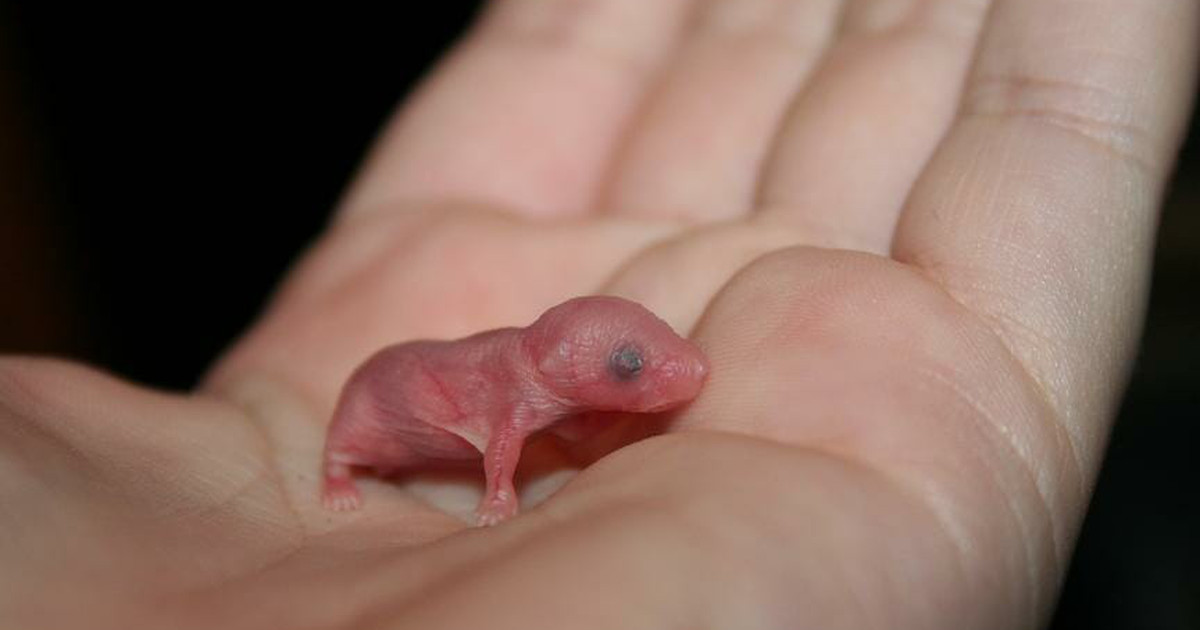
Some people like to feed their bearded dragons pinkie mice, although of course they’re not an insect. They’re a fabulous source of calcium and protein and some good moisture. They’re not suitable for baby or juvenile dragons because of their size. Live adult or juvenile mice shouldn’t be fed to bearded dragons. They could potentially fight back and cause some significant injuries. I don’t personally like the idea of feeding pinky mice to a dragon, but others do and that’s perfectly fine. It’s definitely up to you on that one!
If you give pinkie mice to your bearded dragon too often you do risk it becoming obese. Obesity is a significant problem in captive bearded dragons. They don’t get the same level of exercise as a wild bearded dragon and will gain weight. Energy in – energy out = weight gain.
They can be a useful protein and calcium boost if you have a female who’s recently laid eggs. This is probably the only time we’d really recommend feeding pinkie mice. Even then, not too many and not for too long.
Insects Which Are Poisonous To Bearded Dragons
- Fireflies
- Lightning Bugs
- Glowworms
- Scorpions
- Ladybugs / Ladybirds
- Centipedes and Millipedes (not all, but most are, so just avoid)
- Bees, wasps and hornets
- Many Ants
- Some caterpillars
If in doubt about whether an insect (or any foodstuff) is poisonous to your bearded dragon we recommend assuming that it is unless and until you find evidence from a reputable source that it is in fact safe. Almost every brightly coloured insect is going to be poisonous or try to sting them in some way.
Keeping Feeder Insects
You can buy feeder insects from many pet stores and online retailers. Some stores offer a monthly subscription plan for feeder insects too. Most worms and larvae forms of feeder insect will come in a suitable container. Many will often have some of their own food mixed in with them.
Crickets and locusts can be kept in a cricket pen or similar plastic container. They’ll need a source of water to keep them hydrated and this helps them to hydrate your bearded dragon. The best source of water is ‘bug gel’ or hydrating beads. A bowl of water in the container is a bad idea. Insects are clumsy and will fall into a bowl and drown.
Remove any dead insects from the feeder container when you spot them. Dead insects aren’t good to feed to your bearded dragon. They’ll be low on nutrients and water. They’re not likely to be all that appetising either!
Feed the insects good food prior to feeding them to your bearded dragon. This will improve the nutrients available to the dragon. This process, known as ‘gut loading’ ensures that your dragon gets the most nutrition from its food.
Feeder insects can be dusted with a good quality calcium powder before being offered to the dragon. Be careful not to overdust them though as this will just put them off eating them. It’s like us covering our food in talcum powder. (I stole that analogy from Claire :-)). Over supplementing can cause its own set of problems.
Gut Loading Insects
Gut loading an insect is the process of getting the insect to eat vegetables before feeding it to the bearded dragon. The process should occur just prior to feeding to the dragon. In this way the contents of the insect’s gut is still fresh. Don’t leave it too long between gut loading the insect before feeding to the dragon. If you do then the insect will have digested the food. This won’t be of any benefit to the dragon. We generally recommend a maximum of 24 hours. Having said that, of course you’ll need to feed the insects regularly to keep them alive and healthy. Don’t leave them without food if you’re planning on keeping them for a few days!
Gut loading is relatively easy, particularly with crickets or locusts. Keep them in a separate container with the floor of the container covered in tropical fish food, moistened dry puppy food or moistened lizard pellets. You can also buy products especially for gut loading insects such as bug grub. The insects will graze on this food which loads their gut with the nutrients.
We find it best to keep the insects fairly hungry while they’re in storage. If you feed them too much they poo all over the container. This can be awkward to clean when there’s 25 or more locusts in a container. They will need some food to stay alive of course. But we transfer a few at a time into a separate container to gutload them. Once they’ve eaten for an hour or two, we feed them to the lizard. Since the insect is pretty hungry it tends to eat voraciously!
Hydration Is Important
You can also place small pieces of raw vegetable such as carrots or sweet potatoes. You can sprinkle vitamins and supplements on to the gut loading food too. This will help your bearded dragon get those supplements and reduce the amount of dusting that’s needed.
Don’t put water containers into the insect container as most insects will just fall into it and drown. This is wasting your money and good lizard food. You can buy bug gel if you can’t get the insects to eat high water content vegetables. Pre-hydrating the insects is a great way to keep your bearded dragon hydrated without them having to drink for themselves. Many bearded dragons won’t drink from a water source.
Gut loaded insects for baby and juvenile bearded dragons can be a great way to boost the veggies they get without them actually realising it. This can help their growth rates and help recovery if they get ill.
Further Information
If you have any questions that aren’t answered in this post, please leave a comment/question below. We’ll do our best to answer it. Alternatively you can join the Bearded Dragons Rock facebook group and join our growing community!
Thanks for reading – do feel free to leave us a comment with your thoughts on this post
